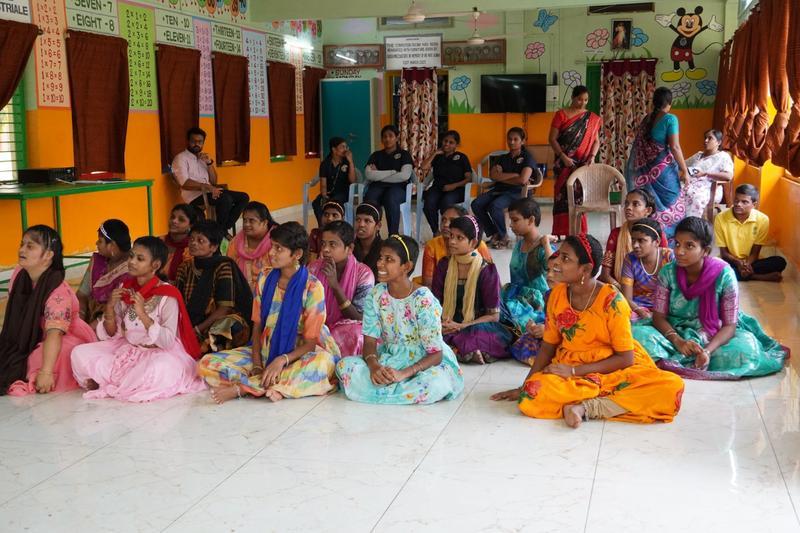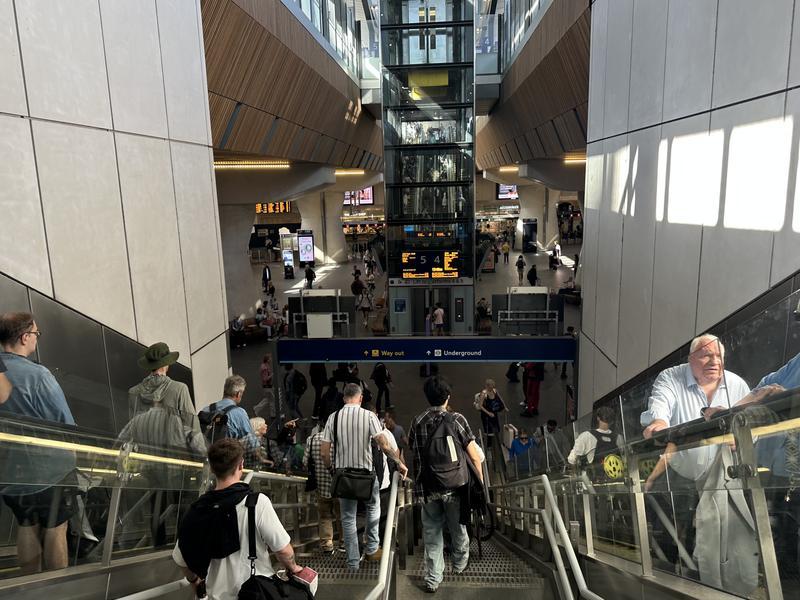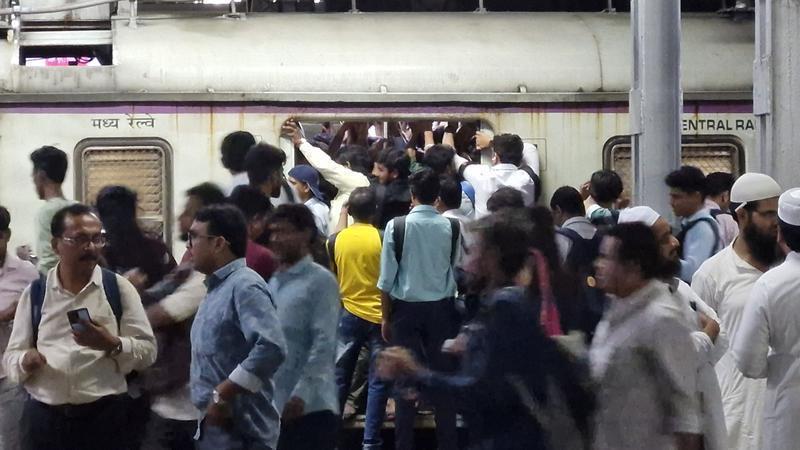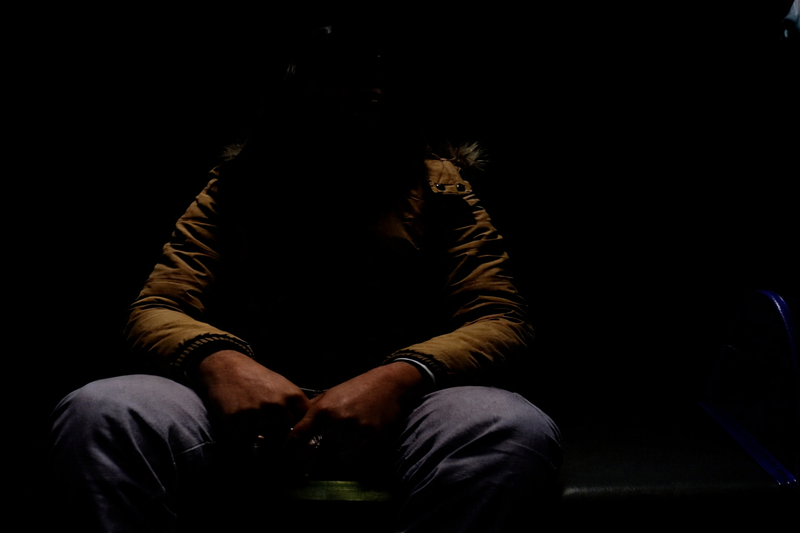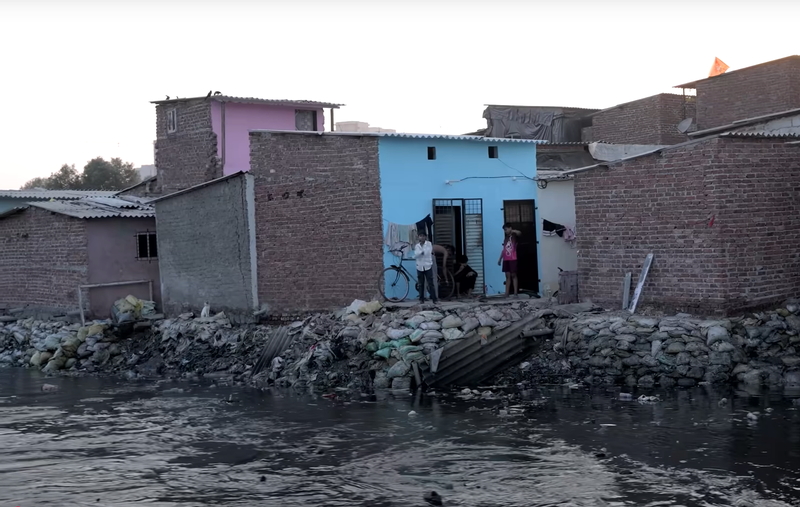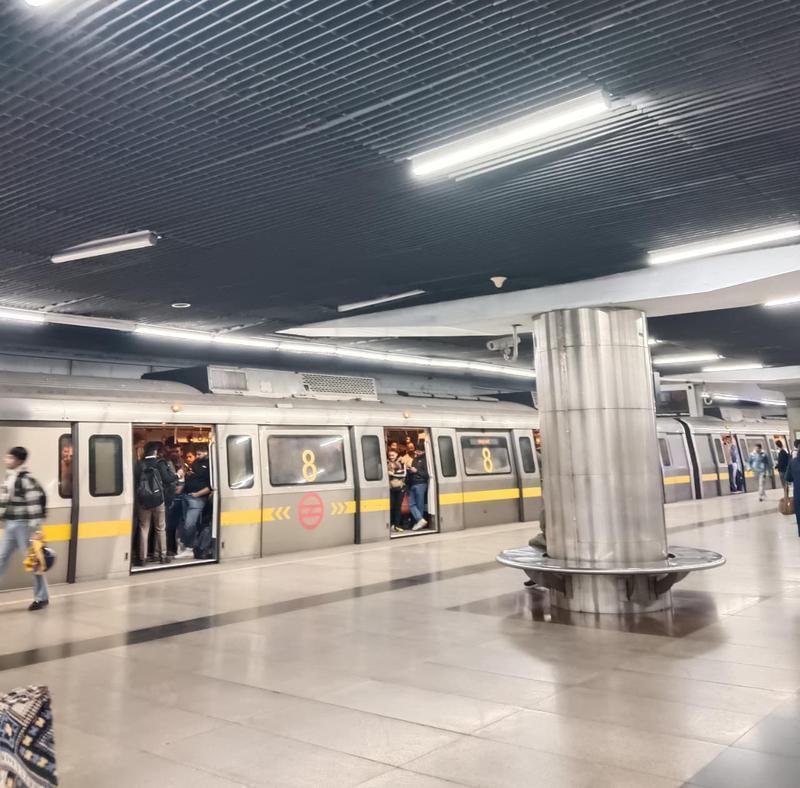🎧 Listen to the Article
This audio is AI-generated for accessibility.
Key Highlights
In this interview, Antonio Benci—representative of Care to Action, an Italian NGO committed to supporting vulnerable children, women and local communities in India—reflects on the complexities of humanitarian work and international cooperation. Active for over 30 years, Care to Action promotes education, child protection, and community empowerment, with a focus on long-term development rather than short-term aid.
In this interview, Antonio Benci—representative of Care to Action, an Italian NGO committed to supporting vulnerable children, women and local communities in India—reflects on the complexities of humanitarian work and international cooperation. Active for over 30 years, Care to Action promotes education, child protection, and community empowerment, with a focus on long-term development rather than short-term aid.
The conversation explores the ethical and practical challenges of operating in India, questioning how organizations from the Global North can intervene without creating dependency or perpetuating paternalistic approaches. Benci shares insights into the evolution of cooperation practices, from providing aid to fostering community-led initiatives and local capacity building. The interview also touches on the growing tendency to prioritize local issues over international ones, raising broader questions about global solidarity, sustainable development, and the future role of NGOs in the Global South.
📒We welcome Antonio Benci and thank him for his time and availability. Let me briefly introduce you for our listeners. We are here with Antonio Benci, who is representing today the organization Care to Action. This is an Italian NGO based in Venice that has been operating since 1991 in southern regions of India. If you don’t mind, before handing over to you, I’ll give a brief overview of your organization’s work, and then you can add more details.
So, Care to Action is an organization that works on development cooperation projects aimed specifically at three target groups: women, children, and communities—local and tribal communities. It started from a group of volunteers whose goal was to raise funds for long-distance adoptions and to build a school for the communities living on the Bay of Bengal, right?
Correct, that was many years ago.
📒Many years ago, yes. It’s a reality that is now well-rooted both in the Italian and Indian contexts. And as we said, it has been active since 1991. We also know it started under the name Care and Share, and only recently changed to Care to Action. Why this change in perspective?
Well, let’s say that since 1991, we’ve launched a whole series of projects that were very much focused on education. The first years were obviously the more idealistic ones, so the focus was mainly on street children—that is, minors living on the streets, exposed to all kinds of risks, and facing the challenge of getting back into education. At a certain point in our history, we expanded our scope. We started working not just on child protection, but also on fighting school dropouts, in the broadest sense of the term, and on women’s empowerment—which is a nice buzzword that has been very popular in recent years, but often means everything and nothing. For us, it simply means supporting the economic independence of women, especially single women or those facing severe financial difficulties, to give them economic security, which in turn leads to greater social empowerment. Then we also started programs in tribal areas in the north of Andhra Pradesh State, and for marginalized communities, meaning the so-called Scheduled Castes—basically the groups that include Dalits (untouchables) and tribal populations. So, when we expanded our scope of intervention, and when we revised the type and methodology of our actions, we realized that "Care and Share", which was very much tied to child support, no longer fully represented our mission. So we kept "care", which still encompasses everything we do, but we added a more action-oriented word—"action"—which I believe better represents us today.
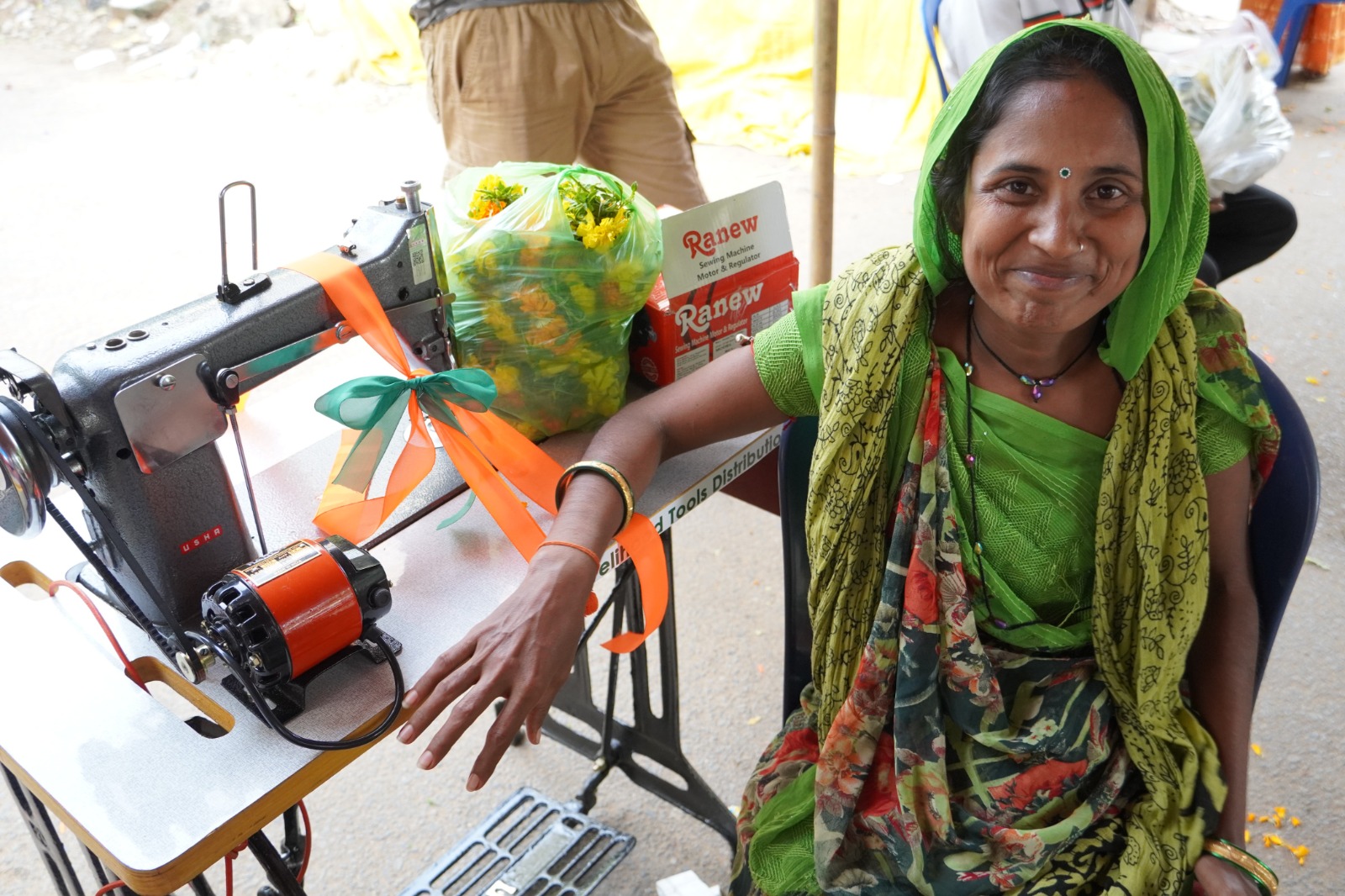
One of the beneficiaries of the Women for Change project, in which Care to Action provided simple work tools to give women a source of income
📒 Ok, thank you very much. So basically, this was a choice aimed at channeling through the name all the areas of intervention that you’ve developed over the years, mostly through fieldwork.
Yes, we’ve been operating since 1991 with local partners. We’ve always had one main partner, if not the only one, who manages and oversees all our activities on the ground, following our guidelines and directions. So essentially, Italy handles fundraising, promotion, and awareness-raising regarding the projects to be implemented in India, while the local partner is the operational arm. It’s a symbiotic relationship between us and India, which has a double benefit. On one hand, working in a relatively small area has allowed us to build strong local contacts, which are obviously a huge advantage—you know the area, the people, the government agencies, and the local dynamics. On the other hand, it also allows us to have direct control over expenses and to verify in a more effective and transparent way how the money is spent.
📒 Right, that’s very interesting. In this regard, I wanted to ask you how you collaborate with local entities, both from an institutional/governmental perspective and on a more practical, non-governmental level. Was it difficult to create a network of stakeholders in the Indian context to start your projects, and also to maintain or adapt them to the evolving needs of the area?
Of course, creating networks is always complex—even in Mestre, let alone in India. So yes, realistically, it is challenging. We have a strong but respectful relationship with governmental entities. "Governmental entities" is a vague term, so let’s be specific. We’ve had a long-standing relationship with the Women and Children Welfare Department, which is in charge of child and women protection. We also have a historical relationship with the CWC, the Child Welfare Committee, which is basically a network of organizations in Vijayawada—the city where we operate, essentially the capital of Andhra Pradesh, a southern state of India. This committee oversees all the activities and initiatives supporting children and women. We also work with the ICDS (Integrated Child Development Services), a government scheme focused on Anganwadis—childcare centers. Over the years, especially recently, we’ve refurbished many Anganwadis in rural areas south of Vijayawada. And of course, we maintain relationships with the agencies that oversee NGOs in India, primarily the Ministry of Finance and the Ministry of Home Affairs. To operate in India, you need external recognition, especially for managing a bank account that receives foreign funds—this is regulated by the FCRA, the Foreign Contribution Regulation Act, which is checked every five years to ensure that the funds are used for their intended purpose. So, there is constant, relentless, never-ending government monitoring.
As for civil society, we have long-standing relationships with schools. In the slums—urban settlements and outskirts of Vijayawada—as well as in the rural areas of Andhra Pradesh and even in Hyderabad, where we work with a different partner, we collaborate with many schools because we currently support about a thousand children through long-distance sponsorships, along with other educational projects. Recently, we’ve also started working with colleges to facilitate job placement for young women finishing university. This is part of a program called School for Future, and specifically a project called Power Skills. Our philosophy has always been to provide educational support from kindergarten through university, not just up to middle school and then letting them fend for themselves. We aim to offer as complete and long-term support as possible.
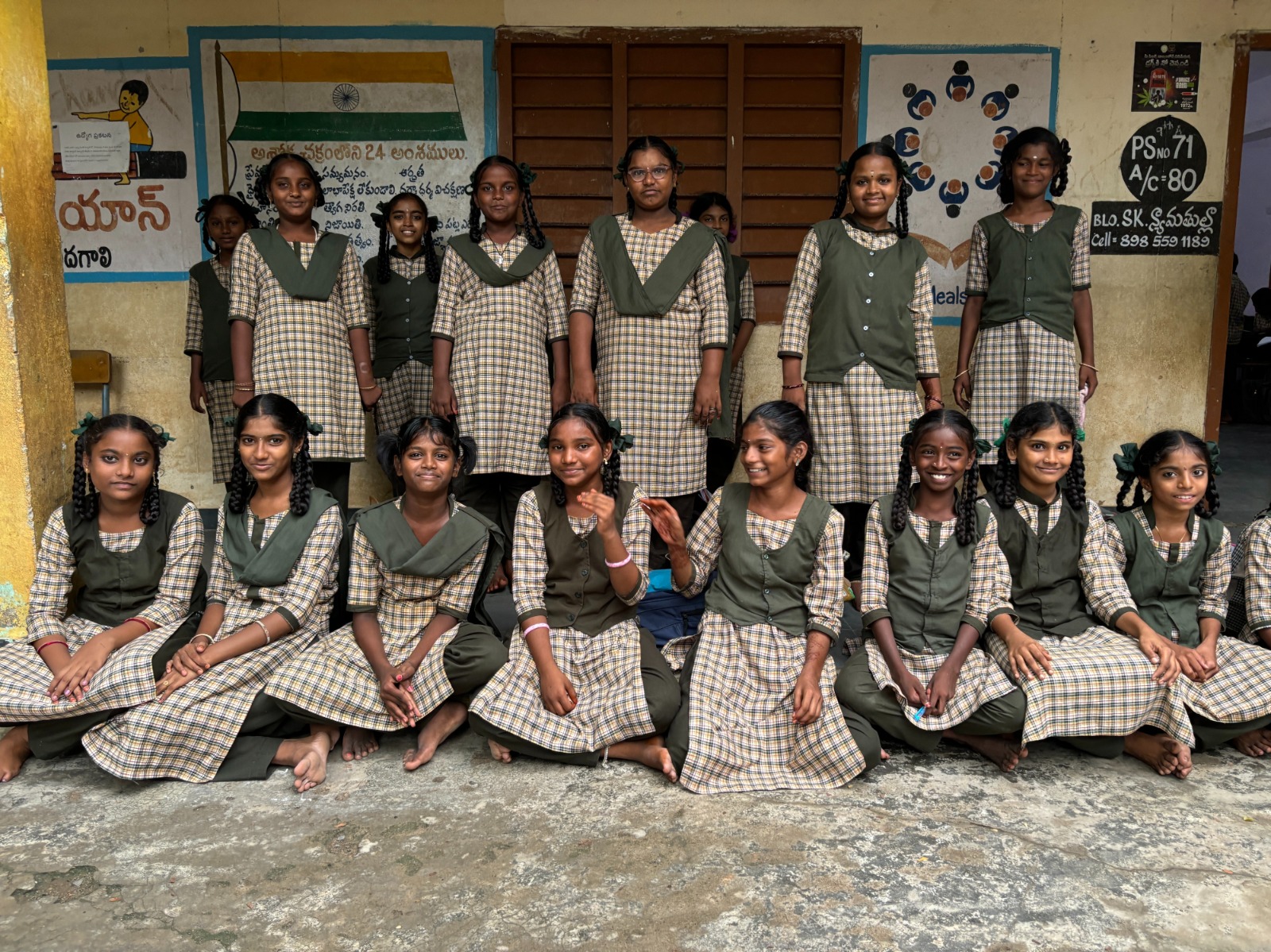
Picture from one of the eight school visited on field mission in august 2025
📒 Thank you for your comprehensive reply. So, you mentioned project monitoring on the local level. On this topic, I wanted to ask: what tools do you use to monitor the actual impact on your beneficiaries, also for accountability and sharing results with your donors?
Well, first of all, we carry out regular missions—my colleagues and I go to India at least five or six times a year. Some of our projects are institutional, so it’s not just about individual or group donors; we also have corporate and institutional donors, who naturally require different levels of reporting. So we have these monitoring missions. Also, the financial management in India is shared with us. For example, if we support a university student, we know exactly how much has been spent on books, fees, and so on. We don’t make cash payments unless they are very small, and we control expenses through shared files and folders that allow us to maintain accurate financial reporting both for institutional projects and other initiatives. Every year—usually between October and November—we plan the budget together. For the past 15 years, we’ve published a social report, and for about 5 years, Deloitte has been our auditor. So in terms of accountability and transparency, I can honestly say there are no issues.
In terms of the impact of what can objectively be achieved in terms of improving living conditions, in India we monitor and verify our beneficiaries, which allows us to track the progress of the improvements in the lives of the groups of people, women, children and young people who receive support. This is easier when it comes to educational support because you have hard data. For example, five years ago, a certain number of kids started school; today, how many of them reached university, continued their studies, or got a job? For women, especially through the Women for Change project, where we provide work tools, we conduct periodic reviews. Recently, we did a survey with about 200 women beneficiaries, and 79% of them are now earning either a primary or secondary source of income thanks to the tools we provided—simple things like a cart, a sewing machine, fishing nets, and so on. That’s a good result, although of course, we also focus on the 21% who didn’t see such positive outcomes. In an ideal world, you’d reach 100%, but in the real world, 79% is better than 78%, but worse than 80%. So, we always try to improve, and periodic reviews help us assess the impact.
📒 Right, and these reviews are accessible on your website for reasons of transparency and monitoring of activities, I assume?
Yes, of course. We don’t publish individual case data for privacy reasons, but the research, surveys, and analyses we conduct are shared internally and often featured in our newsletters or especially on social media. But if anyone asks, we’re always happy to provide the data.
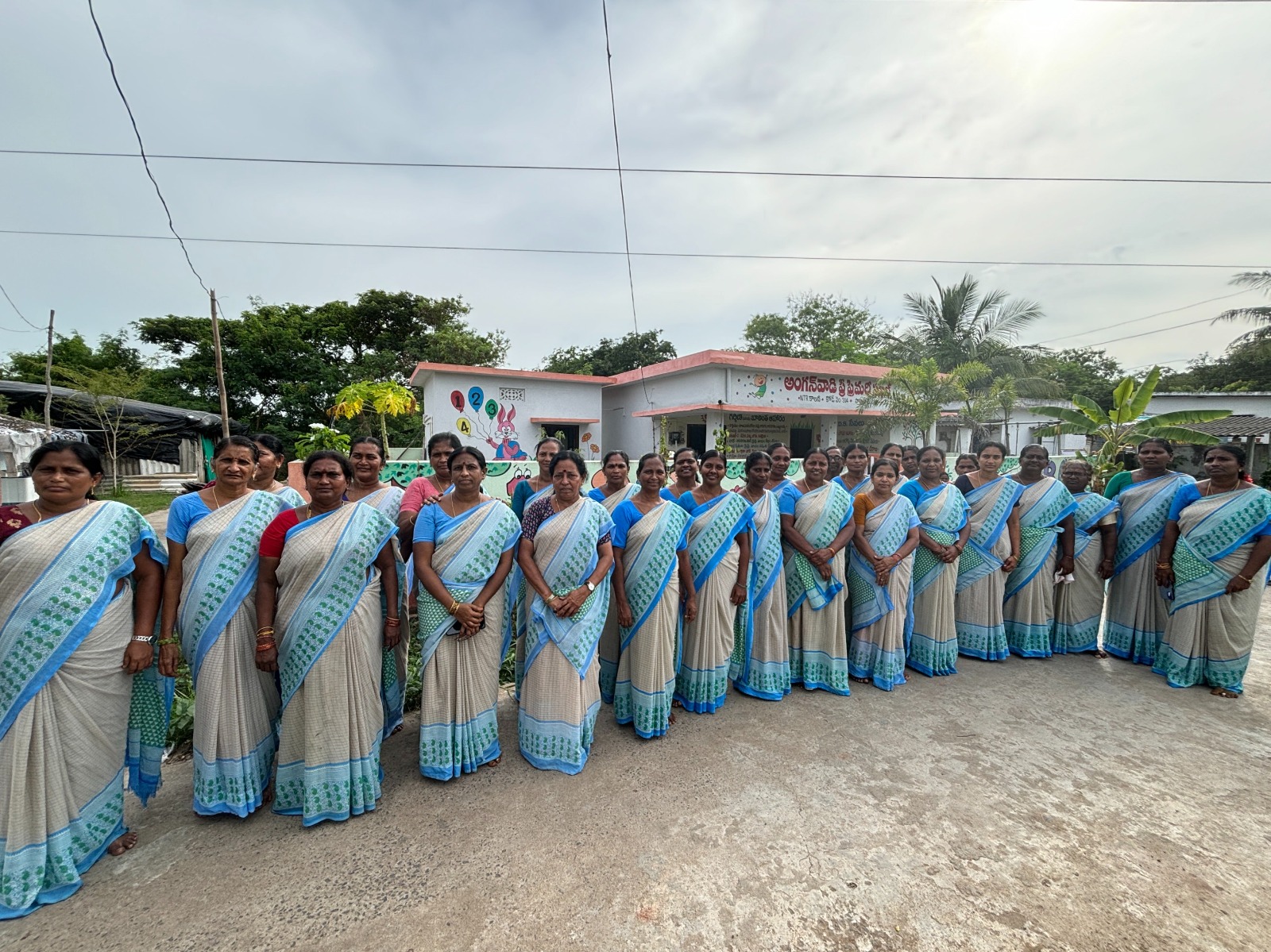
Women empowerment project, field visit 2025
📒 Perfect, let's now move on to a more individual perspective. Considering the humanitarian context you work in, do you think there are still new projects to be developed to meet other needs in the area? Are you planning new collaborations or new types of intervention?
I have to say that in a country like India, which is globally enviable in terms of GDP—it’s the world’s fifth-largest economy—but if you look at GDP per capita, it’s ranked beyond 140th, with an overwhelming number of people formally below the poverty line—roughly one out of three poor people in the world lives in India. With all that in mind, of course there are countless new projects that could be started. We have many opportunities we cannot launch because of the usual lack of funds. Why are funds lacking? Well, institutional cooperation programs follow other paths. For instance, we received funding through the Italian government's "8x1000" tax donation scheme. Normally people allocate it to religious organizations, but if you don’t, a portion goes to the government, which redistributes it to international cooperation projects. Four years ago, we benefited from this for an anti-hunger project. But the latest call, which closes on September 30th, is limited to the so-called Mattei Plan countries, meaning Africa only. So we’re excluded, just like Brazil or most countries in Asia and Latin America. Italian international cooperation today is mostly channeled toward Africa, so that narrows our options. There are other funding possibilities, but even corporate donations have decreased in recent years in Italy. So, raising funds for projects in India is not easy, and this means that even when we have valid projects ready to go, we often face a bottleneck.
📒 I completely agree—that’s a crucial and complex issue. Speaking of the national context, I have one more question.
In recent years, NGOs have been the target of negative narratives. This mainly affects NGOs involved in search and rescue operations (SAR) in the Mediterranean, often accused of facilitating irregular migration. This has created a set of negative stereotypes, though perhaps they impact development NGOs less. But have you noticed any repercussions on your funding or public image due to this?
It’s a huge topic, and since we both have commitments around midnight, we can’t talk for 20 hours about it. There are two sides to this. One is the narrative put forward by NGOs, to which NGOs themselves have contributed, in the sense that NGO is a term that means everything and nothing, because it stands for non-governmental organisation. If you then consider that the vast majority of Italian non-governmental organisations owe their survival largely to government-supported programmes, you can see that there is already a contradiction in terms. But this, of course, does not affect the fact that the projects carried out and the approaches adopted by NGOs, whether they are emergency aid or development NGOs like ours, are increasingly professional and professionalising and increasingly focused on transparently reporting to donors on what is being done. However, it’s undeniable that in recent years, public trust in NGOs has declined, partly because of political narratives, especially targeting those involved in emergency aid in the Mediterranean. This leads to broad generalizations. It certainly affects fundraising.
On the other hand, there’s also the excuse people use when donating—they say, "Oh, but we don’t know where the funds go," which leads to a freeze in support. This kind of suspicion goes back to scandals in the '90s and beyond, which had their reasons, but we don’t have the time to get into that now. Objectively, there’s a mix of factors at play. There’s also some fault on our part because we tend to communicate what we do in overly technical terms, sometimes sounding a bit condescending, using jargon that makes you sound like you belong to some NGO club. Maybe we should go back to the kinds of awareness events that were common in the '60s and '70s, to help people understand a basic truth that COVID revealed to us in all its harshness: in an interconnected and globalized world, a cold in China concerns us too. So addressing a problem in Andhra Pradesh, or in Zambia or in Peru, on the one hand aligns with what we as human beings feel—to be close to our fellow human beings, if I can use an ecumenical expression. But on the other hand, it also means trying to create the conditions where the less discomfort there is in the world, the less discomfort there is in our own neighborhood. To this I can add that this whole narrative, this whole long-term issue, this long-term storytelling, objectively leads to a way of looking at problems, a way of seeing the difficulties of contemporary societies, that is increasingly localized. So, when you talk about India, Zambia, Peru, or other similar realities, you get an attention level of 10. But when you talk about run-down neighborhoods, about soup kitchens just around the corner, you get an attention level of 100.
Now, I’m not saying that these are not worthy projects—on the contrary—but perhaps looking a bit beyond and trying to support both the local soup kitchen and the rural village in Andhra Pradesh might be a fairer solution. But those are subjective opinions that I’m not here to impose; I simply observe the reality that we see from here day after day.
📒 Anyway, it’s a reality that reflects a growing disinterest in issues beyond our borders, because they seem to have no direct impact on our lives. I’ll ask you one last question, a slightly critical one, also to give you the chance to speak openly.
A common criticism of NGOs and organizations working on development cooperation projects is that they often fall into the rhetoric of assistance, paternalism, or creating mechanisms of dependency rather than fostering the empowerment of local communities. Would you like to respond to this and tell us how you deal with that rhetoric?
Well, then, it’s undeniable that we are Westerners living in the West who travel to the Global South to follow certain projects. We probably have a different approach to life, to problems, and even to human empathy that arises—but this is undeniably true. On the other hand, of course—and I would say especially since the 1980s and 1990s—NGOs have embraced sustainability as a mantra, another very fashionable word, which is often used but essentially means—and I don't want to bring up the classic "give a man a fish, teach him to fish" phrase, but essentially it means—ensuring that the program or project you implement can stand on its own feet.
This has led to the understanding that yes, it’s great to renovate the Anganwadis, it’s great to build schools, but there is also—here comes another trendy phrase—capacity building, which can mean everything and nothing, but basically refers to a method of intervention whereby the communities who live around these realities or who are, in quotation marks, the beneficiaries of our interventions, are capable of not just maintaining them—which is the bare minimum—but also collaborating in the design of the intervention itself.
This aspect is more recent compared to just ensuring maintenance. Let me explain better: already in the 70s and 80s it was said that we cannot go there with a volunteer, carry out an intervention, then the volunteer returns to Italy or Europe, and everything is left behind. So, you need someone locally who can keep the whole thing going, to put it bluntly. But it was still often an intervention that was studied, thought out, and planned here [in the West].
The next evolution was: no, we carry out an intervention there, but we study it together with—again in quotation marks—"them", and we implement it in a way that allows them to keep it going and manage it.
The third stage of development should be the one in which all Northern NGOs self-destruct because everything is managed and carried forward by the communities/NGOs in the Global South. Since that’s something for the future, I still have ten years to retirement, so I don’t think I’ll live to see this self-destruction of Northern NGOs—and probably neither will you—but this is, let’s say, the long-term philosophical goal.
We exist because there is discomfort, because there is something wrong, something that governments are unable to fix. And this is why we are "non-governmental." They are unable to fix it for various reasons, which would take too long to explain here, but fundamentally, our intervention should be temporary. That is, it should be the intervention of someone who not only puts on a band-aid but helps to heal the disease together with, let’s say, the "patient."
The moment that happens, we no longer have a reason to exist, and we’ll move on to do something else.
📒 Well, thank you very much, Antonio. We’ll conclude with this invitation to NGOs' self-destruction, in the hope that one day their intervention will no longer be needed which is a reference to the true purpose of non-governmental organisations. Thank you very much for your time.
Obviously, it’s a paradox, but… only up to a certain point.
📒 There’s always hope. Thank you so much for this very interesting conversation and for dedicating your time to us.
📒Update: a message from Antonio Benci
"We distributed over 100 work tools to women in the Gujarati and Pasupala communities, we saw first-hand the progress made by Prem Niketan with our girls becoming increasingly independent, we inaugurated an anganwadi in a rural area and visited all eight schools involved in the project supported by the International Adoptions Commission, which provides concrete help to over 1,000 children. Finally, our Mango Home now has its own KITCHEN that provides meals for our children. We look forward to seeing you all in India, perhaps as early as November! Here are the dates: 14-23 November".
Warm regards to all,
Antonio
